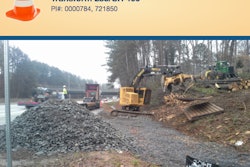
That section of interstate, which reopened well ahead of schedule on May 13, has at least 250,000 vehicles traveling on it daily and is a major artery in and out of the city. On any given day, a minor accident in any spot along this route can cause delays and then mushroom to side streets and alternate roads commuters use to circumvent the backup. Removing an entire section of that interstate creates the potential for chaos.
A fire that was reportedly started underneath the bridge burned construction materials, including high-density polyethylene piping, weakening the substructure enough that the deck collapsed. Roughly 350 feet of interstate both north and south are being replaced, along with 61 steel beams and 13 columns.
ABC techniques represent a broad classification of methods and management systems designed to build, reconstruct or rehabilitate a bridge as fast as possible.
The American Society of Civil Engineers said in its 2017 Infrastructure Report Card the use of ABCs is one of the saving graces for the nation’s bridges, despite the overall U.S. bridge system receiving a C+ grade. The group reported that techniques such as prefab bridge components and the use of improved materials are helping to reduce construction time to minimize traffic disruptions.
On the management side, the acceleration of a bridge job comes in the form of a design-build contract. By combining the design and construction into one contract, agencies can cut construction time and lower project costs. Contractors that either have design engineers on staff, or who partner with design firms, have the edge in taking on large ABC jobs.
This front-end approach is transparent to the traveling public, which is focused on getting its bridge, and getting it now.









